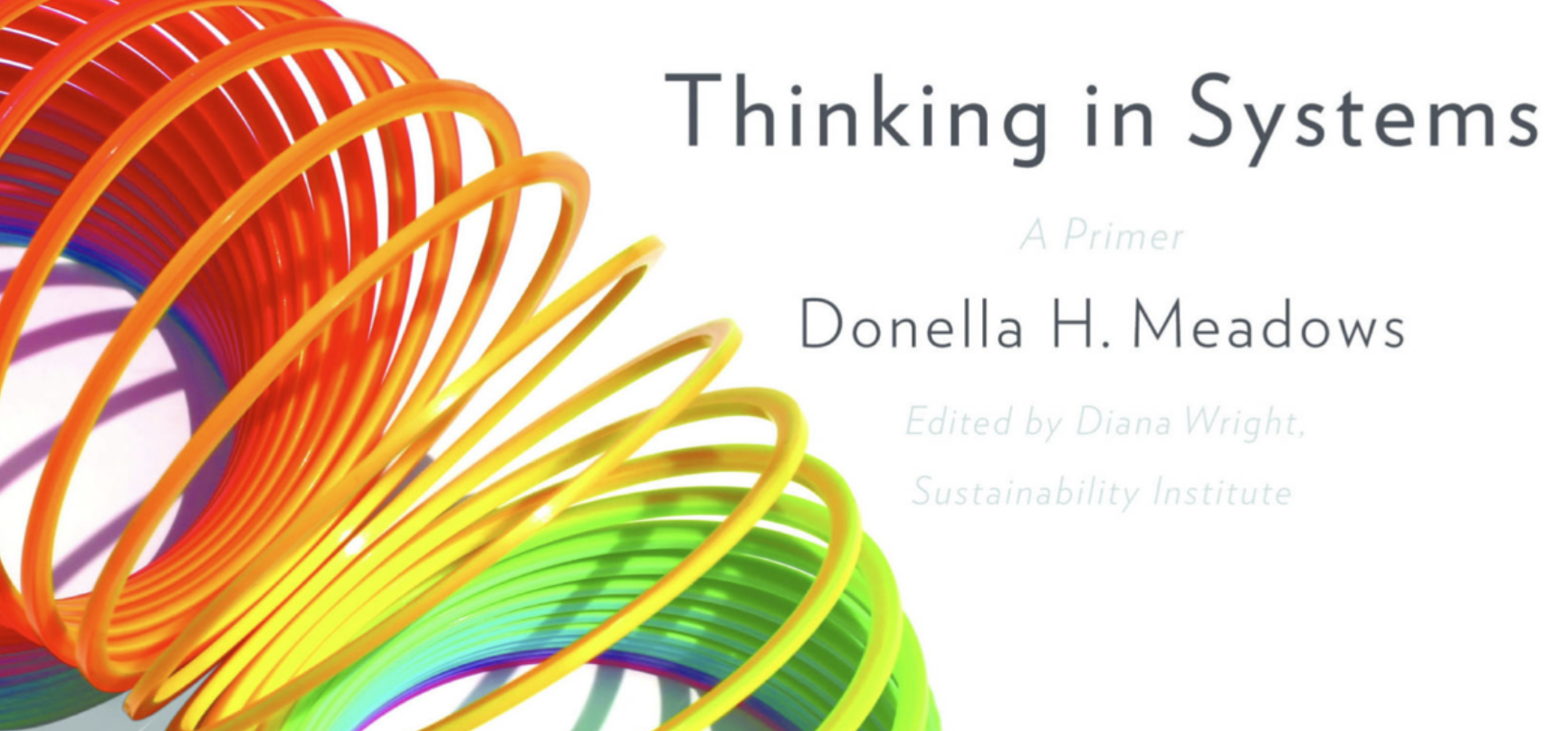Thinking in Systems: A Primer – A Book
In a world increasingly defined by complexity and interdependence, Donella Meadows’ “Thinking in Systems: A Primer” emerges as a beacon of clarity and insight. This deceptively slim book, published posthumously in 2008, offers a powerful introduction to systems thinking, a mental framework that equips readers to see the world through the lens of interconnected parts and their dynamic behavior.
Meadows, an environmental scientist and lead author of the groundbreaking “Limits to Growth,” lays the groundwork for systems thinking by introducing core concepts like stocks and flows, feedback loops, and time delays. These seemingly simple ideas, illustrated through relatable metaphors like a bathtub filling and draining, empower readers to grasp the complexities of real-world systems. From the delicate balance of ecosystems to the intricate workings of economies, Meadows demonstrates how seemingly isolated elements interact and influence each other in often surprising ways.
Overview:
The book is structured into three main parts:
- System Structure and Behavior: This section introduces the fundamental concepts of systems thinking, including stocks, flows, feedback loops, and time delays. Meadows explains how these components interact to create dynamic behaviors in systems, providing readers with a solid foundation in the mechanics of systems theory.
- Systems and Us: Here, Meadows explores the role of humans within systems. She delves into how our mental models influence our perception and interaction with systems, and how these models can both help and hinder our ability to effectively manage and improve systems.
- Creating Change – In Systems and in Our Philosophy: In the final section, Meadows offers practical advice on how to apply systems thinking to real-world problems. She discusses the importance of leveraging leverage points, those critical places within a system where a small change can lead to significant improvements. Meadows also emphasizes the need for humility, patience, and a willingness to learn from failure in the pursuit of systemic change.
Key Concepts:
- Stocks and Flows: Meadows introduces stocks as the elements within a system that you can see, count, or measure at any given time. Flows, on the other hand, are the rates at which stocks change. For example, in a bathtub, the water level is a stock, while the water flowing in from the faucet and out through the drain are flows.
- Feedback Loops: A central concept in systems thinking, feedback loops can be reinforcing (positive) or balancing (negative). Reinforcing feedback loops amplify change, leading to exponential growth or decline, while balancing feedback loops work to stabilize a system by counteracting change.
- Time Delays: Meadows highlights the importance of time delays in systems. These are the periods between an action and its visible effects. Understanding time delays is crucial for effective decision-making, as actions taken today may not show results until much later.
- Leverage Points: One of the most powerful insights from the book is the idea of leverage points. These are places within a system where a small change can have a significant impact. Meadows identifies twelve leverage points, ranging from changing constants and parameters to altering the rules of the system or even its goals.
Strengths:
- Clarity and Accessibility: Meadows excels at breaking down complex ideas into simple, understandable terms. Her writing is clear and engaging, making the book accessible to readers with no prior knowledge of systems theory.
- Practical Examples: The book is rich with examples from a variety of fields, including ecology, economics, and social systems. These examples help to illustrate the principles of systems thinking and demonstrate their applicability to real-world problems.
- Timeless Wisdom: Although published posthumously in 2008, the book’s insights remain highly relevant today. Meadows’ emphasis on interconnectedness, sustainability, and holistic thinking resonates strongly in the context of contemporary global challenges such as climate change, economic inequality, and public health crises.
- Empowerment through Understanding: Meadows empowers readers by showing that understanding systems can lead to more effective and thoughtful action. She encourages a mindset of curiosity, experimentation, and continual learning.
Weaknesses:
- Abstract Nature: Some readers might find the abstract nature of systems thinking challenging to grasp fully, especially without practical experience in the field. While Meadows provides numerous examples, the conceptual nature of the material may still pose a learning curve for some.
- Depth of Coverage: As an introductory primer, the book provides a broad overview of systems thinking but does not delve deeply into any specific area. Readers seeking in-depth technical analysis or advanced methodologies may need to supplement their reading with more specialized texts.
Conclusion:
“Thinking in Systems: A Primer” is a foundational text that offers valuable insights into the complexity of the world we live in. Donella Meadows’ work serves as a call to think more holistically and to recognize the interconnectedness of the systems that shape our lives. Whether you are a student, professional, or simply a curious individual, this book provides a powerful toolkit for understanding and influencing the dynamic systems that surround us.
Meadows’ legacy lives on through this book, inspiring readers to approach problems with a systems perspective, to seek leverage points for change, and to engage with the world in a more thoughtful and informed way. As we face increasingly complex global challenges, the principles of systems thinking presented in this primer are more relevant and necessary than ever.














Post Comment